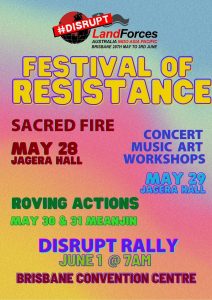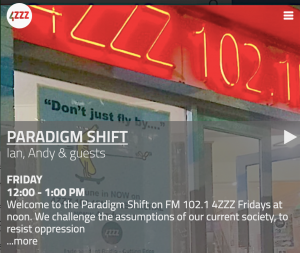That. Was. Glorious. We disrupted a massive arms fair. During seven days of creative, ingenious, staunch, peaceful, collaborative actions, over three hundred people spoke truth to the power of the war makers at Brisbane’s Land Forces weapons expo. Our Festival of Resistance unfolded in a whirlwind of humanity discovering itself, as we supported each other […]
Articles
World Beyond War Fact Sheets
Weapons Expos – Paradigm Shift
FEBRUARY 26, 2021 This week we talk all about weapons expos. Inspired by the upcoming “Land Forces 2021”, we hear Zelda Grimshaw talk about how Australian manufactured weapons end up killing West Papuan civilians, and Iain McIntyre about how protestors shut down the AIDEX weapons fair for good in the early 90’s. Listen to Paradigm […]

